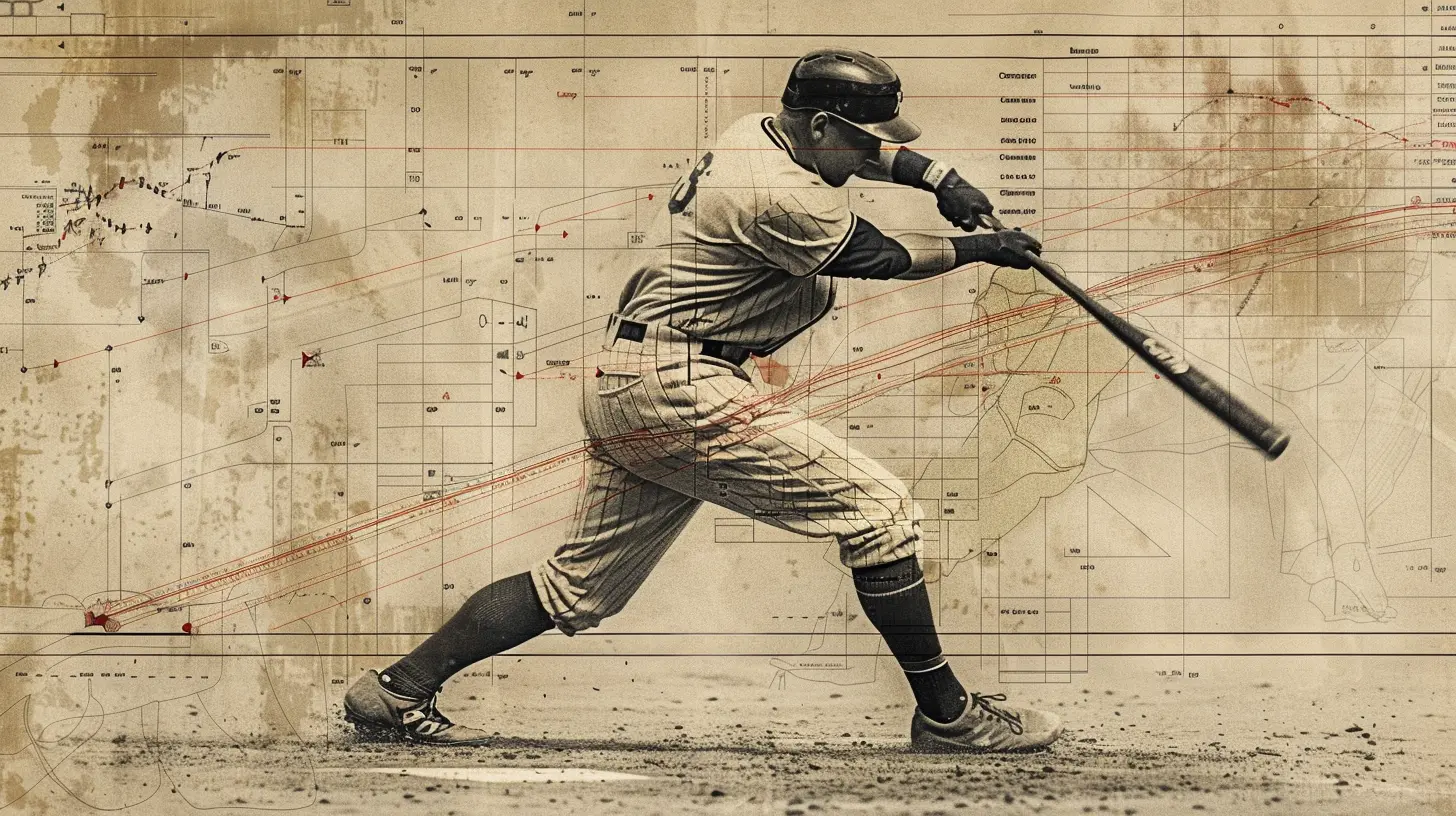The Evolution of Baseball Analytics: How Data is Changing the Game
2 October 2025
Baseball has always been considered America’s pastime, a blend of tradition, grit, and gut feelings. Managers once made decisions based on instinct, coaches followed their "feel," and scouts relied on the eye test. But fast-forward to today, and baseball looks more like a high-tech lab than a nostalgic weekend sport. Why? Because analytics have completely changed the game.
We’re talking about a revolution—one driven by numbers, metrics, and data points you'd need a calculator and three cups of coffee to decode at first glance. But don’t worry, I’ve got you. Let’s break down how baseball analytics evolved and why it’s reshaping everything from player recruitment to in-game strategies.
From Gut Feelings to Gigabytes: A Quick History
Let’s set the stage. Back in the day, baseball decisions were mostly subjective. Scouts looked for “five-tool” players, managers made pitching changes based on a player’s body language, and wins were celebrated or mourned by how lucky a bounce was. It was romantic but, let’s be honest, pretty hit-or-miss.Then came sabermetrics—a term coined from SABR (Society for American Baseball Research). This was the turning point. Suddenly, people realized you could use cold, hard data to see through the smoke and mirrors of old-school thinking.
Enter Bill James, the godfather of sabermetrics. He wasn’t part of any front office or coaching staff. He was just a baseball-obsessed writer and statistician looking to understand the game better. His ideas were initially laughed off—but not for long.
Moneyball: When Data Got Cool
You can’t talk about baseball analytics without mentioning the movie (and real-life story) that sparked a data-driven revolution: Moneyball.Billy Beane, the Oakland Athletics’ GM, faced a challenge—compete with powerhouse teams like the Yankees with only a shoestring budget. So, what did he do? He turned to analytics. Beane and his data team focused on undervalued stats like on-base percentage (OBP) and slugging percentage (SLG) to sign players other teams overlooked.
Did it work? Heck yes. The A’s went on a 20-game winning streak and made it to the playoffs, proving that numbers could outsmart fancy checkbooks.
After Moneyball, everything changed. Suddenly, every team wanted a data department.
The Rise of Advanced Metrics
Once the "nerds" had cracked the door open, they kicked it wide open. Now, we have a buffet of advanced stats that go far beyond batting averages and ERA.1. WAR (Wins Above Replacement)
WAR tries to answer one simple question: How valuable is a player compared to a “replacement-level” guy from the minors or bench?It’s not perfect (some argue it’s too complex), but it gives teams a way to value players across positions and skill levels. Think of WAR as the baseball version of a Swiss Army knife—versatile, compact, and super useful.
2. BABIP (Batting Average on Balls In Play)
Sounds fancy, but it’s actually pretty straightforward. BABIP measures how often a ball in play goes for a hit, excluding homers and strikeouts. If a player has a sky-high BABIP, it might mean they’re lucky. If it’s low, maybe they’re unlucky. Teams use this to figure out if a hitter is hot or just riding a wave of fortune.3. FIP (Fielding Independent Pitching)
ERA has always been the go-to stat for pitchers, but it includes things they can’t control—like their teammates’ defense. FIP zooms in on what pitchers can control: strikeouts, walks, hit batters, and homers.In short, FIP ignores the noise and looks at pure pitching skill.
4. Exit Velocity and Launch Angle
These are the shiny new toys in the analytics toolbox, powered by Statcast, MLB’s data-tracking system.- Exit velocity tells us how hard a ball was hit.
- Launch angle shows the vertical angle the ball takes off the bat.
Put them together, and you get a pretty potent combo to evaluate hitting potential. A ball smoked at 110 MPH with a 15-degree launch angle? That’s probably heading for the stands.
The Statcast Era: Hello, Big Brother
In 2015, MLB introduced Statcast, and suddenly every movement on the field was fair game for data capture. We're talking about infield shifts, sprint speed, catch probability, and even how fast a pitcher’s hips rotate. It’s like having Hawkeye from Marvel tracking every inch of the field.Teams now have terabytes of data on every swing, pitch, and step. Want to know how likely a center fielder was to catch that diving grab? Statcast can tell you. Want to know if a struggling batter is hitting into bad luck? Check his hard-hit rate.
This isn’t just information—it’s insight.
Analytics in the Dugout: Changing In-Game Strategy
Remember when bunts, steals, and small-ball were all the rage? Analytics has flipped that script. The math says that giving up outs via bunting or taking the risk of stealing a base often isn't worth it.Instead, teams focus on:
- Maximizing runs per inning
- Matching pitchers to hitters via handedness and tendencies
- Defensive positioning based on spray charts
Ever noticed extreme infield shifts where the third baseman is practically playing short right field? Yup, that’s analytics in action.
Even bullpen usage has changed. Starters don’t always go deep into games now. Managers use matchup-based relief pitching, guided by spreadsheets rather than gut feelings.
Scouting and Player Development: The New Frontier
Scouting used to be all about radar guns and clipboards. Now? It's tablets, algorithms, and biomechanics.Draft Day Decisions
Front offices use predictive modeling to evaluate high school and college players. They simulate thousands of career paths using player comps and performance projections. It's like fantasy baseball—but for real.Player Development
Minor leaguers now wear wearable tech that monitors everything from heart rate to muscle load. Coaches tweak mechanics using slow-mo video paired with analytical feedback. Pitchers learn new grips based on spin rate, and hitters retool swings to lift more line drives.Analytics has turned potential into production—faster than ever before.
Fan Experience and Fantasy Sports: Analytics for the People
Analytics hasn't just changed how teams play. It's made being a fan more interactive, even addictive, especially if you’re into fantasy baseball or sports betting.Now, fans can look at:
- Daily advanced stat leaderboards
- Heat maps showing hitter hot zones
- Pitching arsenals and spin rates
Fantasy players are no longer flying blind—they’re armed with the same tools teams use. It’s like everyone got a playbook upgrade.
The Pushback: Is Analytics Killing the Romance?
Not everyone’s thrilled with the rise of numbers in baseball.Critics argue that games feel slower, more robotic. There are more strikeouts, fewer stolen bases, and less “action.” Some fans miss the unpredictability—the bunt for a hit, the daring triple, the hit-and-run.
So, is analytics sucking the soul out of the sport?
Maybe a little. But it’s also made baseball smarter, fairer, and more competitive. You can't unring this bell. And in the end, it’s about adapting—not abandoning the game’s roots.
The Future: AI, Machine Learning & Even More Data
What’s next? If current trends are any clue, the future is borderline sci-fi.- AI algorithms will predict injury risk
- Virtual reality (VR) training sessions will become standard
- Biometric data will be analyzed in real-time mid-game
Imagine a scenario where a manager gets a notification mid-inning that a pitcher’s fatigue level has hit a red zone. That’s not far off.
Eventually, we might even see robot umpires (we’re already testing strike-zone tracking systems in the minors).
Analytics isn’t just the present—it’s the future.
So, Where Do We Go From Here?
Baseball analytics have come a long way—from paper spreadsheets in quiet offices to multi-million-dollar systems driving every major decision on and off the field. Love it or not, data is the new MVP.If you're a fan, you don’t have to dive headfirst into the numbers soup. But understanding the basics helps you see the game on a whole new level. And hey, it might even help you win your next fantasy league.
So, next time you hear a commentator talk about launch angles or see a defensive shift that looks like chess on grass, just smile. Because you’re witnessing the beautiful blend of math and muscle that is modern baseball.
all images in this post were generated using AI tools
Category:
BaseballAuthor:

Frankie Bailey
Discussion
rate this article
1 comments
Ronan Clayton
Baseball analytics: where numbers dance like a shortstop and spreadsheets slide into home! Can data really hit a home run? Let’s find out!
October 14, 2025 at 12:04 PM

Frankie Bailey
Absolutely! Baseball analytics is revolutionizing the game, revealing insights that can lead to smarter strategies and improved performance on the field. Let’s explore how data is shaping the future of baseball!


